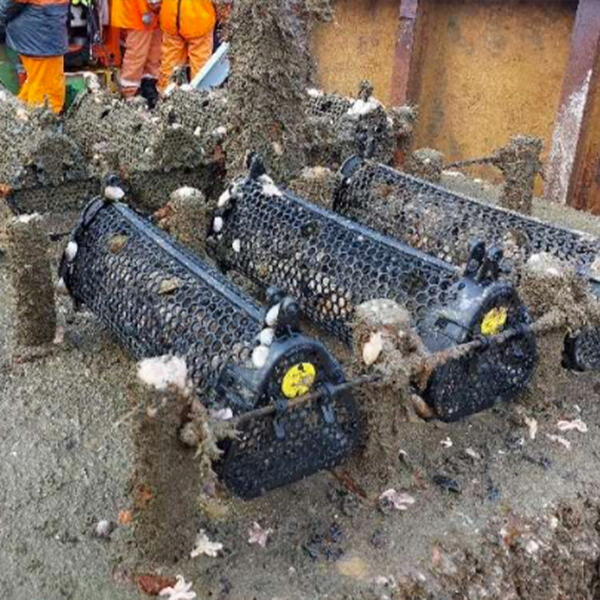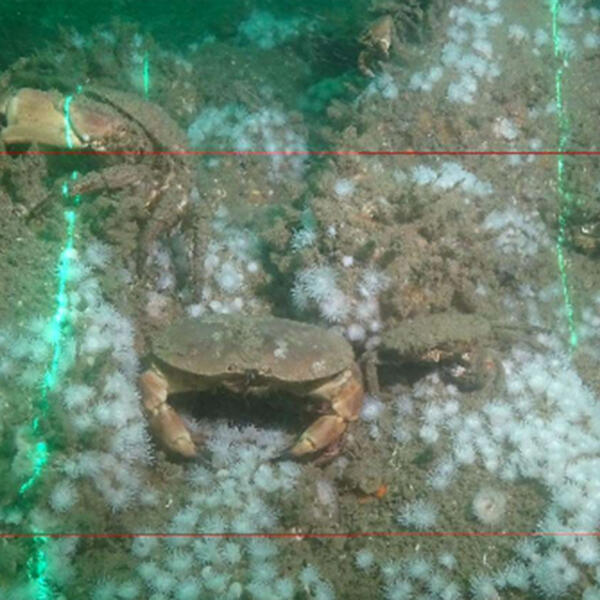Baby oysters and 128 species found
The presence of baby oysters is the standout finding. “Yes! We found oyster spat, or baby oysters, in multiple locations where we took water samples”, says Marin. “And most of the oysters we examined were almost ready to release their eggs into the sea.”
The researchers also looked at biodiversity within the wind farm using photo and video analyses, scrape samples and DNA analysis of water samples. They found no fewer than 128 species in total. Marin adds, “We are talking crabs and lobsters, various species of fish, worms, seabed animals, anemones, starfish… you name it.”
Scour protection as oyster habitat
Marin says that scour protection around the wind turbines plays a key role in the project: “The North Sea has a sandy seabed that would erode rapidly if monopiles were just driven into it. That’s why two layers of rocks are placed around the foundations — a filter layer of small rocks topped with an armour layer of larger rocks. We added shell material at eight locations, as oysters prefer to settle on other shells.”
Promoting all marine life
These layers of shells are rich in calcium carbonate. “This makes oyster larvae go, ‘Hey, there’s a lot of calcium carbonate here, so this is the place to be’”, explains Marin. If enough oysters do this, a natural oyster reef will eventually form. “That was our goal when we added the shell material in 2021. And it still is.”
Marin notes that scour protection also attracts a variety of marine animals: “It offers a resting and reproduction area for fish, which, in turn, draws other marine animals like sharks, rays and seals.”
New research in 2028
So far, the oyster tables have been a resounding success. What’s next for the project? “We now know that these layers of rocks and shells attract marine life”, says Marin. “It will be interesting to see how this develops over the years.”
The offshore wind farm is attracting animals and organisms, but Marin hopes it will eventually become a source of new marine life “with fish and other species coming here to spawn. In 2028, we will return to study the oyster tables and analyse biodiversity.”


